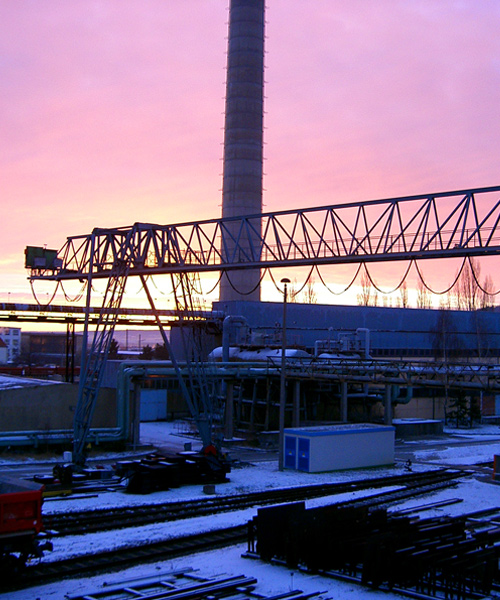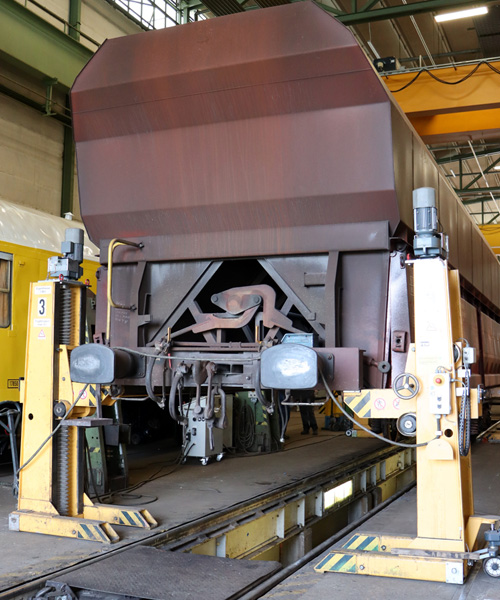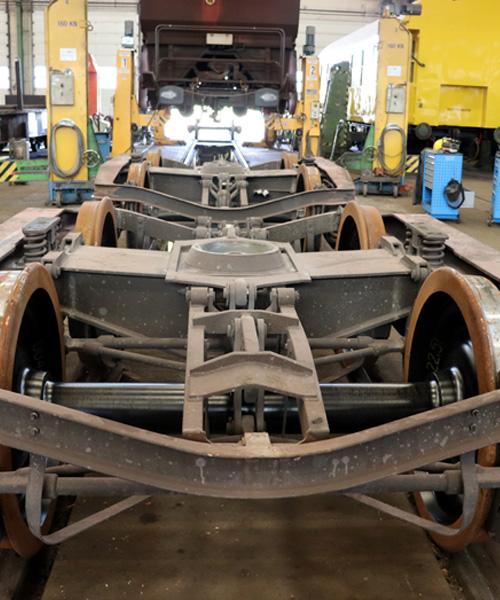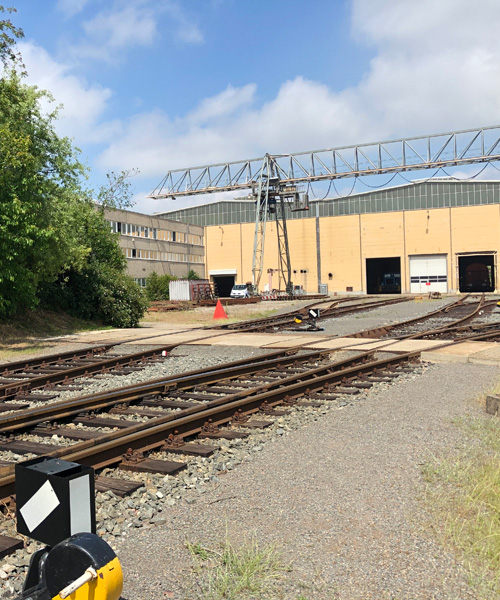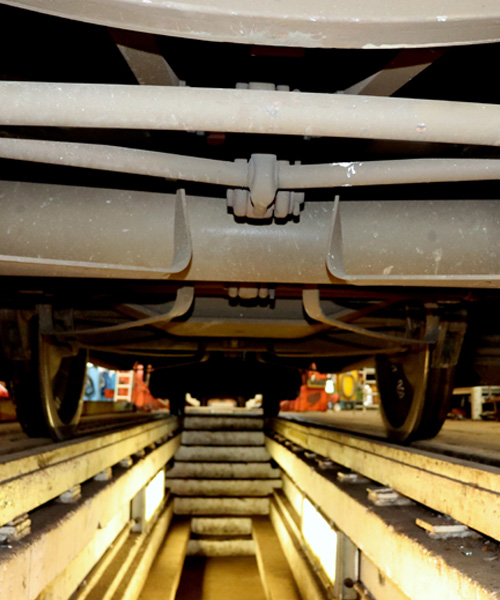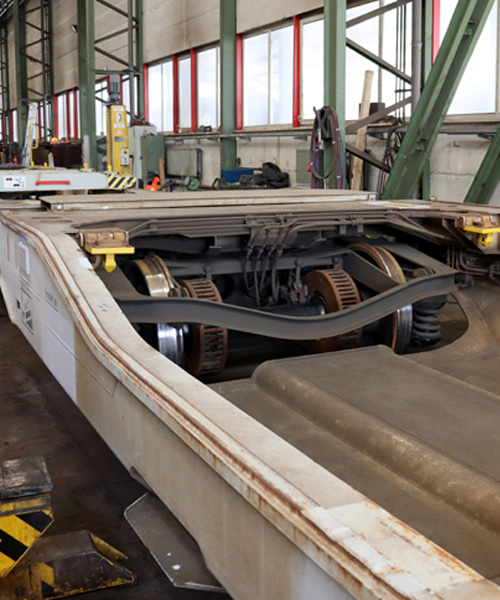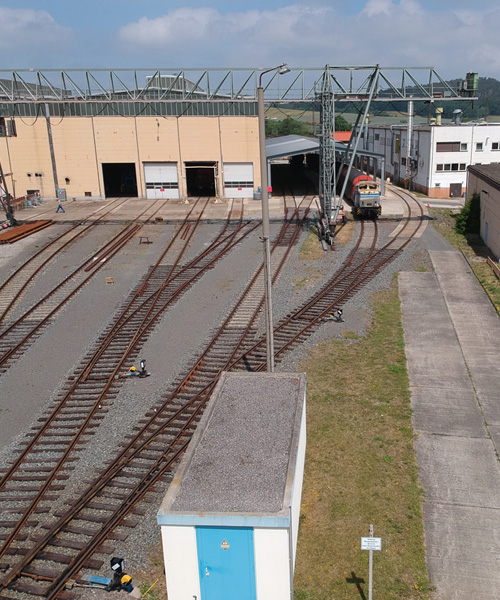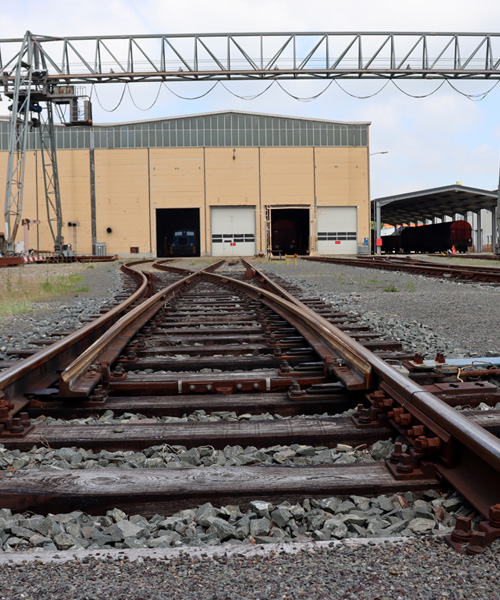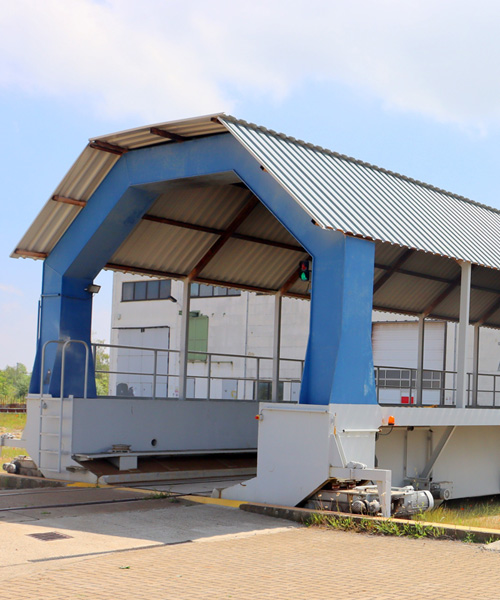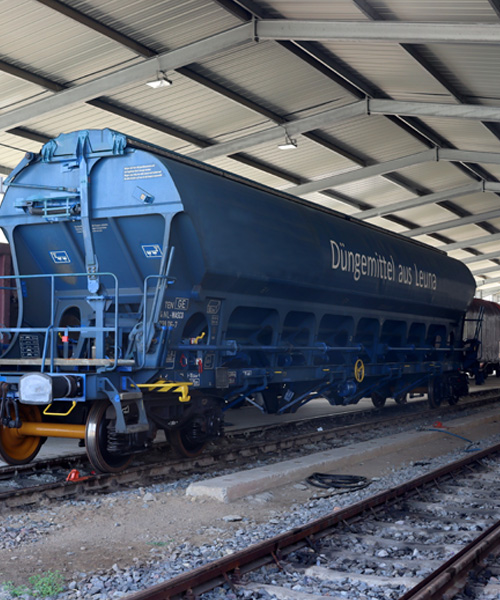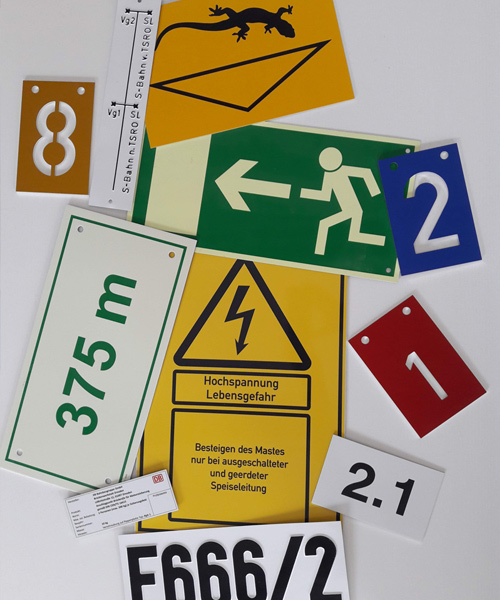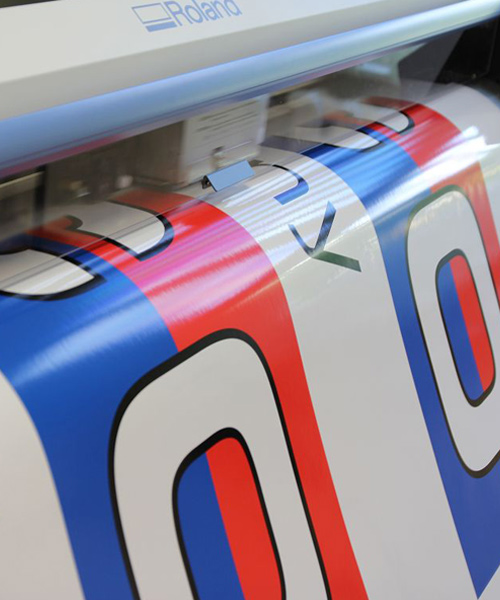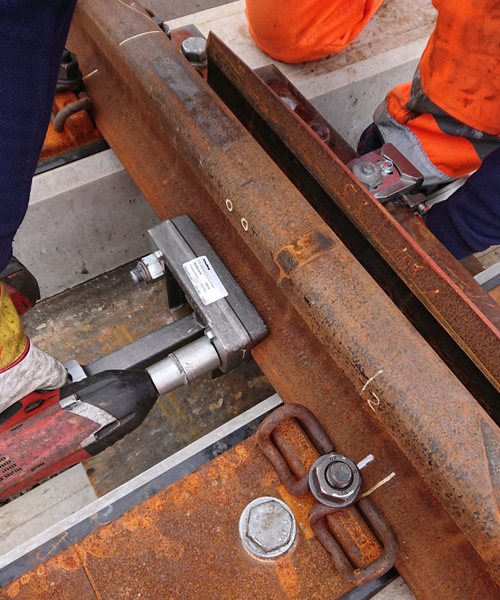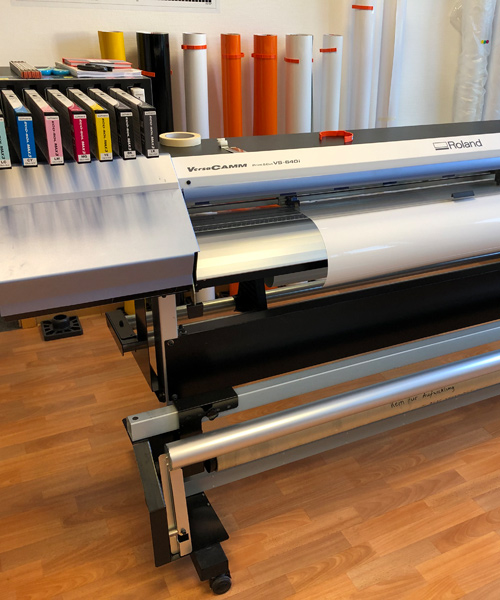
The FEW Blankenburg GmbH plans, constructs, projects and manufactures products for the railway.
- Rail Vehicle Technology
- Mobile assembly
- Printing technology
The FEW has a varied operating history of about 150 years. In the course of this history, significant developments in railway technology have taken place in Blankenburg. Today, we are committed to the tradition that has grown and will continue this tradition with the company name that can be understood as a motto.
History of the FEW Blankenburg
Once it was the repair shop of the Halberstadt-Blankenburger Railroad (HBE): today's Vehicle and development plant Blankenburg GmbH (Harz). The partly historical workshops have a turbulent history. Today, the FEW is an efficient company.
HBE was one of those German private railroads that made headlines in the railroad industry several times. The reason for this was, among others, the combined adhesion and rack railroad of the Abt system and the steam locomotives of the animal class, which started from Blankenburg (Harz). They replaced the cogwheel system and formed the constructive basis for the construction of the later pr. T 20 or DR series 95.
A not to be underestimated contribution to the technical development of HBE was made by the initially railway-owned repair workshop in Blankenburg (Harz) (see Important Stages).
After HBE was taken over by the Deutsche Reichsbahn, the workshops, which had been merged into the "Blankenburger Railroad equipment and machinery factory GmbH" (BEMA) in 1921, proved to be unsuitable within the existing structures. Therefore, BEMA was converted into a Reichsbahn Repair Works (RAW). When it became apparent in the 1950s that the industry of the GDR was not in a position to supply the Deutsche Reichsbahn with sufficient machinery and equipment typical of the railroads and that importing them was out of the question, the railroad had to resort to self-help. The Ministry of Transportation reacted to this situation by founding the Reichsbahn Development Plant (REW) in Blankenburg (Harz). As quickly as possible the RAW Blankenburg (Harz) had to be converted into the REW for the production of special technology. The following tasks were formulated in a letter from Kramer, Minister of Transportation of the GDR, to Lindemann, Special Representative for the Development of the REW, dated July 31, 1957:
- research, development and construction of mechanisms and railway-typical equipment for the DR.
- production of facilities and equipment for the DR.
- the performance of tests and trials ... «
From 1960 to 1967, this work had to be done for the entire transport system of the GDR.
Initially, very simple products such as signal discs, threshold carrying pliers, screw clamps and straightening irons were produced. From 1959, the development and production of small equipment began, including sleeper milling machines, miniature tamping machines and rail loading and unloading equipment. Just two years later, yoke-mounted cranes, ballast ploughs, sleeper replacement equipment and rail brakes of the "Wuhlheide III" type were produced in Blankenburg (Harz) for the German State Railroad. The first large track construction machine, the ballast bed cleaning machine (SBR) 202, was added.
Since 1989, only a few important products have been developed and partially produced:
- Four-axle bulk tipping wagon with one tipping body Fas 126
- box tipper fans 128
- Bulk material tipping wagon SGKW-1, SGKW-2
- Bulk goods wagon SGW 40
- Four-axle flat car Lore LB 6 (Hamburg subway)
- KSEM gravel and ballast paving machine (Wiebe)
Over the course of time, four areas of responsibility crystallized for the FEW. The first concerns track-laying machines and machines for the electrification of track systems. A complete range of multi-purpose vehicles is available for almost all necessary work. This includes track vehicles (MZG basic unit) and rail bolting technology (MZS bolting machine). Small mechanisms, such as micro tamping units (KSE) and large track-laying machines, including trench clearing units (GRE), round off the program. Track-laying machines were supplied not only to the Deutsche Reichsbahn but also to the railroads of Czechoslovakia (CSD), Poland (PKP) and Hungary (MAV) as well as to the local lignite industry and also to industrial railroads of the former Soviet Union. The second area comprises shunting equipment, including its control systems. Examples are the screw track brake (SGB), the beam track brake (BGB) and the double-pressure device (BGE). Efficient washing systems for traction units, suburban and subway trains and passenger coaches form the third complex. Finally, special systems and equipment are manufactured, such as the concrete sleeper production plant at the Rethwisch concrete plant. They comprise the fourth complex. In the economic system of the GDR, the FEW had important tasks to fulfill as a railway-owned plant and mechanical engineering company.
In 1977, the first quality assurance system was created as a compilation of quality-relevant activity processes and responsibilities. The political turnaround in 1989 brought radical changes. The objectives for development and production were almost completely abolished, the workforce was thinned out to approx. 20% of the previous workforce and development and production was limited to a few areas of shunting and superstructure technology. With the formation of Deutsche Bahn AG, the plant was classified as a branch of the railroad construction division, retaining the name FEW.
Since 1994, FEW has been part of the railroad construction division of DB AG, and in 1997 it became part of the special works division. Since 01.07.1997 the FEW has been a plant in the special works division of DB AG. This was intended to promote the independent existence and prepare the sale of the plant to third parties. For the FEW, the search for buyers and the subsequent negotiations were very lengthy. Several times the railroad threatened to close down. Customers and staff were extremely unsettled. Thanks to tireless joint efforts by state and federal politicians, the waiting buyer, the union Transnet and the workforce, the sale was finally successful.
On 01.08.2003 the plant was transferred from DB AG to FEW Blankenburg GmbH. Shareholder of the GmbH is GSU, Society for Safety and Environmental Technologies GmbH from Berlin. Dr.-Ing. Manfred Ottow is involved in entrepreneurial activities as managing partner of FEW Blankenburg GmbH, Blankenburg/Harz.
A milestone was set when our patented automatic speed control system for pay-off systems "G-RA®", which is provided with all necessary approvals, was used to control the track brakes in high performance stations with up to 250 pay-offs per hour.
In the further period of the company management, investments were only sparsely dealt with. Instead, funds were spent on investments in research and development of new systems and equipment. As a result, insolvency occurred on 03.10.2009. The reasons given were outstanding payments and development and construction costs.
At that time, products for railroads had been manufactured in Blankenburg for more than 100 years. The fact that this is still the case today was a matter of four years. With the takeover by the Villmann Group, however, insolvency was no longer an issue for FEW. "Unnoticed by public relations, Blankenburg is a strong railroad location", but for many years the company's financial situation was better known than its products. "Insolvency" - the people of Blankenburg heard this word more than once in connection with the FEW (Fahrzeug- und Entwicklungswerk). The family-run service company based in Winsen an der Aller (Lower Saxony) specialized in railroad technology. The main focus was on the maintenance of freight cars and locomotives. "We produce niche products", informed Andreas Gerling, plant manager in Blankenburg. The company therefore hardly had to do any advertising. Nevertheless, it had customers from all over Europe. They referred products within the ranges shunting technology, the mobile assembly in track systems as well as the maintenance of freight cars. So that these could be manufactured economically and effectively, investments were necessary. Thus old, so far unused areas were converted into a new production line, the track network was already changed and a hall was built. A guarantee for success, on the other hand, was "close, good cooperation between the management level and the employees".
During this time, about 115 employees work at the Blankenburg site. On 01.01.2020 VIS Traffic Industry Systems GmbH Halberstadt acquires all shares in FEW Vehicle and development plant GmbH Blankenburg from the Villmann Group. VIS has more than 175 years of experience in rail vehicle construction and with more than 250 employees has specialized in modernization, conversion, repair and maintenance of rail vehicles for passenger transport. With the acquisition of FEW GmbH, which employs around 95 people, it has expanded its product portfolio to include maintenance and repair work on freight cars and work vehicles, mobile installations in track systems (control and safety technology, retrofitting of switches and signal boards, maintenance of outdoor facilities and signage), hollow sleepers, as well as lettering and foil printing.
Outlook Today FEW concentrates and works in the field of repair and maintenance of rail vehicles for freight traffic. Our maintenance services, products and mobile services sustainably improve the availability, reliability and service life of our customers' rail vehicles. Maintenance costs for freight rail vehicles with a service life of more than 30 years can ultimately be as high as the initial investment. Effective maintenance and repair therefore influences both direct maintenance costs and service life. We use the entire experience of our employees to develop optimal solutions. We are also intensively thinking about the structure of this operation. However, decisions on this have not yet been made.
31.3.1873 Opening of the line Halberstadt Blankenburg of HBE. Birth of the HBE workshop in Blankenburg.
1893 HBE is awarded a certificate for the Abt rack railway system at the World Expo in Chicago.
20.6.1921 Foundation of the "Blankenburger Railroad equipment and machinery factory GmbH" (BEMA) as subsidiary of HBE. The workshops are financially separated from HBE and transferred to BEMA.
1.9.1946 The administration of HBE, including BEMA, will be taken over by the province of Saxony. HBE had already been expropriated before.
1.4.1949 HBE is taken over by the German Reichsbahn. Thereupon BEMA is absorbed into the Reichsbahn Repair Works (RAW) Blankenburg. Maintenances are mainly tender locomotives and freight cars.
1.8.1957 The Minister of Transportation of the GDR orders that the RAW Blankenburg be re-profiled as the Reichsbahn- Development work (REW). The vehicle maintenance will be finished a little later.
1.1.1960 The REW becomes the Research and Development Center of Transportation (FEV).
3.3.1962 FEV receives the status of a scientific industrial enterprise (WIB-FEV).
1.5.1967 The plant is again part of the German Reichsbahn. Until today the official name is: German Reichsbahn, Research and development plant (FEW-DR). However, the DR-internal assignment is changed several times. Since 1977, the FEW has been an operation of the Reichsbahn Building Directorate (Rbbd).
01.01.1994 The FEW remains within DB AG in the Railway Construction Division
01.07.1997 Assignment to the Specialty Works division of DB AG. The specialty plants are to be led to an independent existence and sold from the DB AG.
01.08.2003 The plant goes from DB AG to FEW Blankenburg GmbH. The shareholder of the GmbH is GSU, Society for Safety and Environmental Technologies GmbH from Berlin.
01.02.2004 The development and manufacturing of the traditional FEW product lines is divided into four business units. The aim is to be able to react quickly to the needs of our customers. The divisions are responsible for their own costs. Production is assigned to the Shunting Technology division.
30.09.2004 The FEW presents the prototype of a new type of power supply for electric rail brakes to the railroad public. Together with this power supply the electric rail brake is a strong alternative to hydraulic brakes.
15.02.2006 In Hamburg-Langenfelde, we handed over the largest washing plant ever built by FEW. The plant is used for the exterior washing of ICE trains of the German Railroad AG.
01.06.2010 The Villmann Group takes over FEW (Vehicle and development plant. A family-run service company based in Winsen an der Aller (Lower Saxony). Which has specialized in railroad technology. It focuses on the maintenance of freight cars and locomotives.
01.01.2020 VIS Traffic Industry Systems GmbH Halberstadt acquires all shares in FEW Vehicle and development plant GmbH Blankenburg from the Villmann Group.

